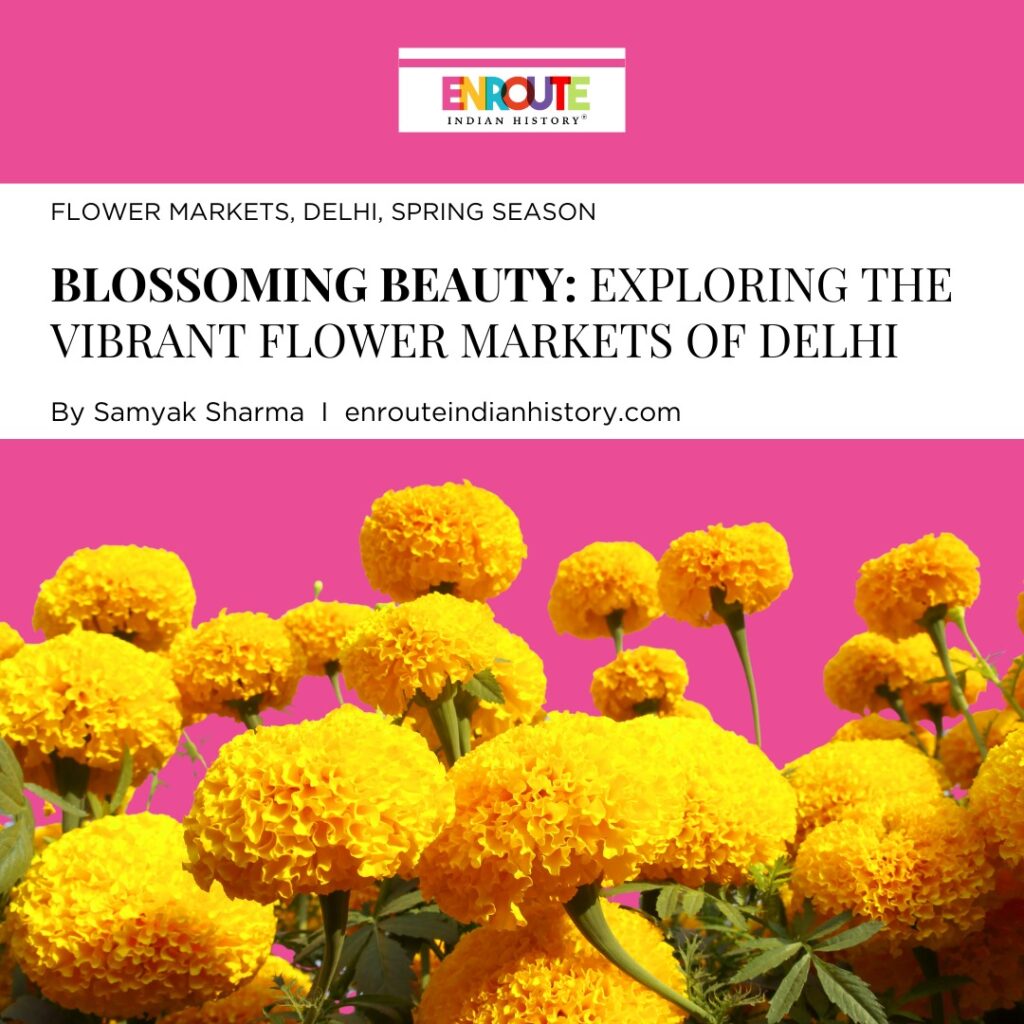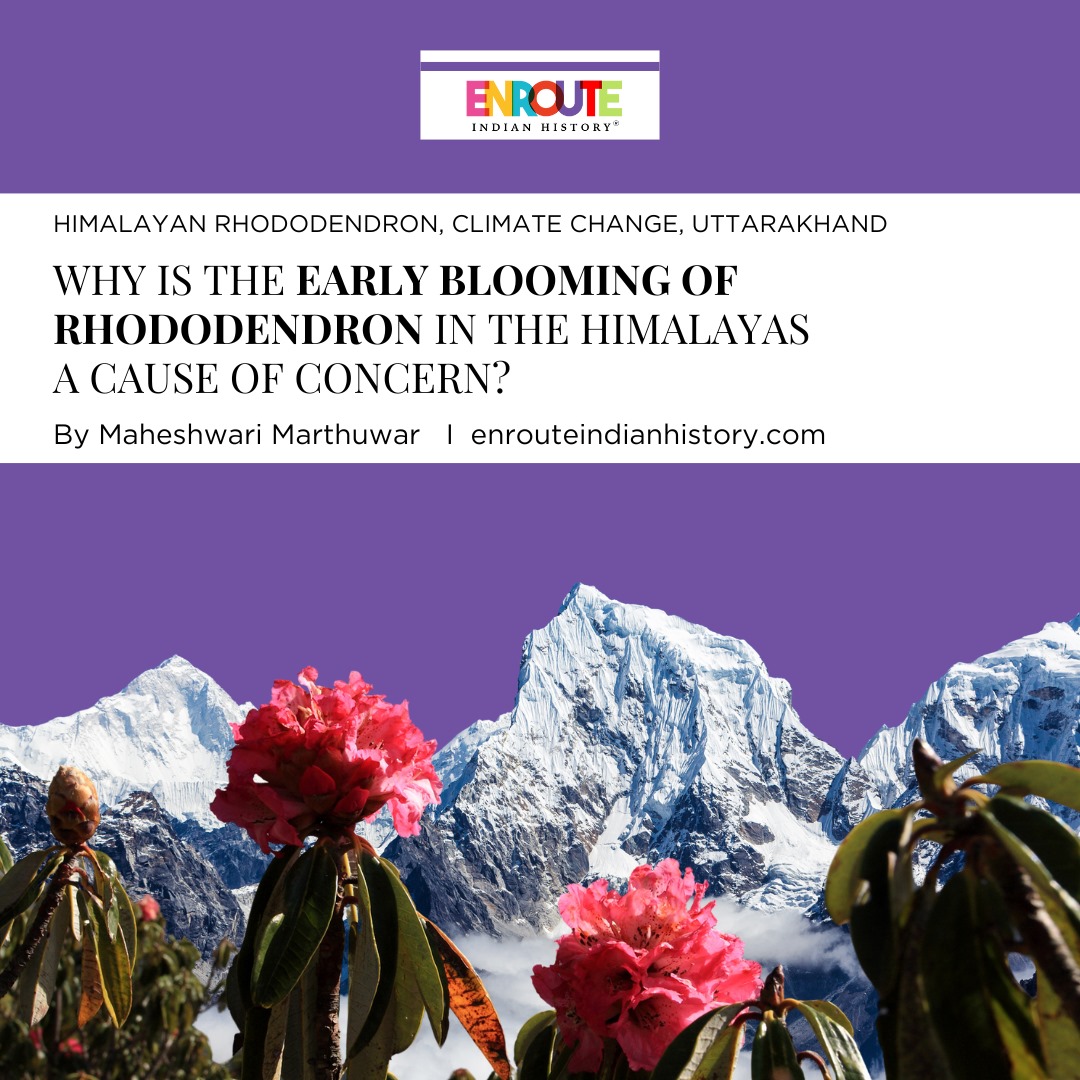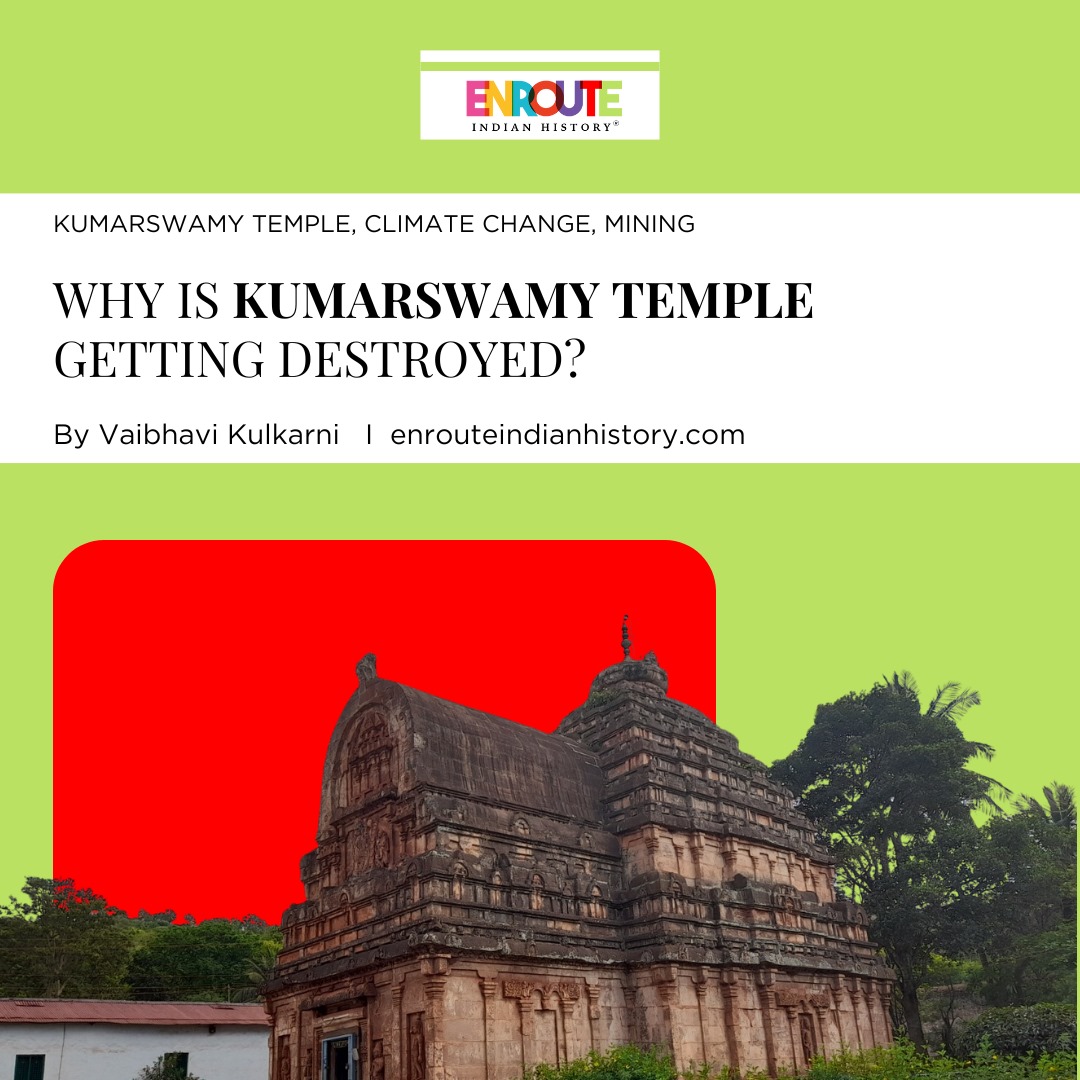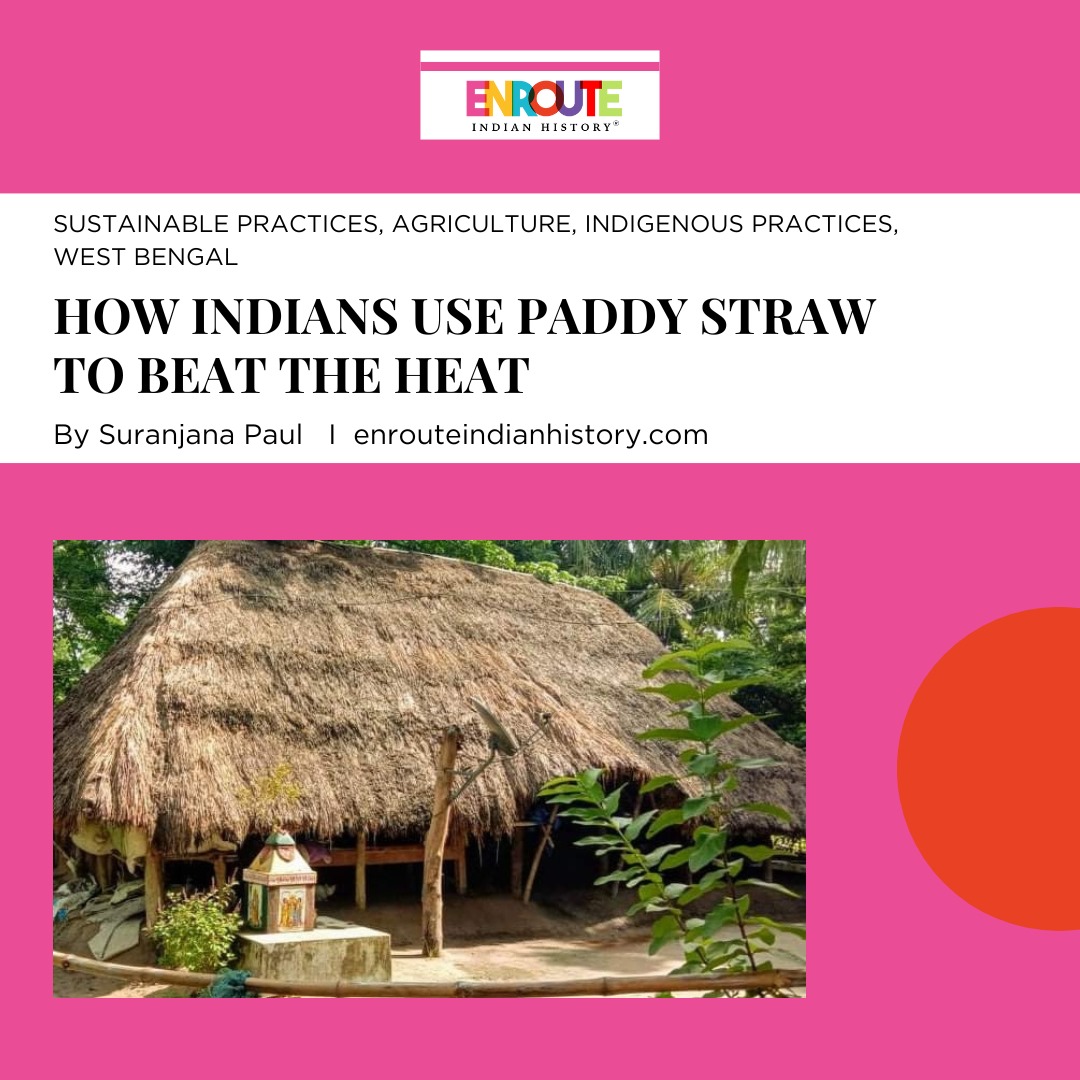Blossoming Beauty: Exploring the Vibrant Flower Markets of Delhi
- enrouteI
- March 20, 2024

Spring in Delhi is a vibrant season marked by a transformation in weather, ushering in blooming flowers, lush greenery, and chirping birds. The iconic cherry blossoms adorn parks and boulevards, attracting visitors with their beauty. The city’s flower markets buzz with activity as people purchase colorful blooms for homes and festivities. Cultural events like Holi add to the festive spirit, celebrating life and nature’s renewal. Spring in Delhi is a time of rejuvenation, where the beauty of nature and the joy of outdoor activities come together to create a truly magical experience for locals and tourists alike.
Delhi is renowned for its vibrant and bustling flower markets that offer a kaleidoscope of colors, scents, and cultural experiences. These markets are not just places to buy and sell flowers but are integral to the city’s cultural fabric, economic activity, and social interactions.
One of the most iconic flower markets in Delhi is the Ghazipur Phool Mandi, which dates back several decades and has grown into a major trading hub for flowers from all over India. Located near the Ghazipur wholesale fruit market, this market is a bustling hive of activity, especially in the early hours of the morning when fresh blooms arrive from different parts of the country.
The diversity of flora available in Delhi’s flower markets is truly astounding. From traditional favorites like marigolds, roses, and jasmine to exotic blooms like orchids and lilies, these markets cater to a wide range of floral preferences. The seasonal availability of flowers adds to the charm, with each season bringing its own unique blooms and colors.
Visiting a flower market in Delhi is a sensory delight. The vibrant colors of the flowers, the fragrant scents wafting through the air, and the lively chatter of vendors and customers create a lively and enchanting atmosphere. The skill and artistry of flower vendors are on full display as they expertly arrange blooms into intricate garlands, bouquets, and decorations.

Source: Housing
Apart from their aesthetic appeal, Delhi’s flower markets play a crucial role in the city’s economy. They provide livelihoods to thousands of people involved in cultivation, transportation, wholesale, and retail of flowers. The markets also serve as important cultural spaces where people come together to buy flowers for religious ceremonies, weddings, festivals, and other special occasions.
Delhi’s flower markets are not just commercial spaces but vibrant cultural hubs that reflect the city’s love for nature, beauty, and tradition. They offer a unique glimpse into the rich tapestry of Delhi’s cultural heritage and economic dynamism, making them a must-visit for locals and tourists alike.
Historical Perspective
The history of flower markets in Delhi is a rich tapestry that weaves together ancient traditions, cultural significance, and economic dynamism. Dating back centuries, these markets have evolved from humble beginnings to become vibrant hubs of activity, reflecting the city’s deep-rooted love for flowers and its diverse cultural heritage.
Flowers have held immense cultural and religious significance in India for millennia. They are not just objects of beauty but symbols of purity, devotion, and auspiciousness. In ancient times, flowers were used in rituals, ceremonies, and festivals, forming an integral part of daily life. The practice of offering flowers to deities, adorning homes and temples with floral decorations, and using them in weddings and other celebrations has been passed down through generations, contributing to the enduring popularity of flowers in Indian society.
The history of flower markets in Delhi can be traced back to the Mughal era, when the city was known as Shahjahanabad and served as the capital of the Mughal Empire. During this time, gardens and parks were adorned with a variety of flowers, including roses, jasmine, marigolds, and lotuses. The Mughal emperors were known for their love of gardens and flowers, and their influence contributed to the cultivation and trade of flowers in Delhi.
As Delhi continued to grow and prosper, so did its flower markets. By the 19th century, the city had established several markets dedicated to the sale of flowers. One of the oldest and most prominent flower markets during this period was the Fatehpuri Flower Market, located near the historic Fatehpuri Mosque in Old Delhi. This market became a bustling center for the trade of flowers, attracting buyers and sellers from across the region.
The British colonial period further influenced the development of flower markets in Delhi. The introduction of modern transportation systems, such as railways and roads, facilitated the transportation of flowers from distant regions to Delhi. This led to an expansion in the variety of flowers available in the markets, as exotic blooms from different parts of India found their way to the capital city.

Source: India Today
The post-independence era witnessed a significant growth in Delhi’s flower markets, driven by urbanization, population growth, and increased demand for flowers. New markets emerged in different parts of the city, catering to the needs of a diverse population. The Ghazipur Phool Mandi, established in the 1960s near the Ghazipur wholesale fruit market, emerged as one of the largest and most important flower markets in Delhi. It became a hub for the wholesale trade of flowers, attracting vendors and buyers from all over the country.
Today, Delhi’s flower markets play a vital role in the city’s economy, providing employment opportunities to thousands of people involved in cultivation, transportation, wholesale, and retail of flowers. The markets also serve as cultural spaces where people come together to celebrate festivals, weddings, and other occasions with flowers.
Top Flower Markets in Delhi
Ghazipur Phool Mandi
One of the oldest and most iconic flower markets in Delhi is the Ghazipur Phool Mandi. Located near the Ghazipur wholesale fruit market in East Delhi, this market has a rich history dating back several decades. Originally established to cater to the growing demand for flowers in the city, the Ghazipur Phool Mandi has evolved into a major trading hub for flowers from all over India.
The market comes alive in the early hours of the morning when fresh blooms arrive from different parts of the country. Vendors and buyers flock to the market, creating a bustling atmosphere filled with the sights and sounds of commerce. From traditional favorites like marigolds, roses, and jasmine to exotic blooms like orchids and lilies, the Ghazipur Phool Mandi offers a wide variety of flowers to suit every occasion and preference.
One of the unique aspects of the Ghazipur Phool Mandi is its wholesale nature, catering primarily to retailers, event planners, decorators, and religious institutions. However, individual buyers can also visit the market to purchase flowers in bulk for personal use or special occasions. The market’s strategic location near major transportation routes ensures easy access for vendors and buyers alike.
Fatehpuri Flower Market
Located near the historic Fatehpuri Mosque in Old Delhi, the Fatehpuri Flower Market is another prominent destination for flower enthusiasts. The market has a long-standing history dating back to the Mughal era when it served as a hub for the trade of flowers and other goods. Today, the Fatehpuri Flower Market continues to thrive, attracting visitors with its vibrant atmosphere and diverse range of flowers.
The market is known for its traditional charm, with narrow lanes lined with flower shops offering a colorful array of blooms. From garlands and bouquets to loose flowers and decorative arrangements, the Fatehpuri Flower Market caters to a wide range of floral needs. Marigolds, roses, tuberoses, and jasmine are among the popular choices available at the market.
What sets the Fatehpuri Flower Market apart is its proximity to other historical landmarks in Old Delhi, making it a popular stop for tourists exploring the city’s heritage. Visitors can immerse themselves in the bustling lanes, interact with local vendors, and experience the vibrant sights and scents of the market.

Source: Zee5
Ghantaghar Flower Market
Situated near the iconic Ghantaghar (Clock Tower) in Chandni Chowk, the Ghantaghar Flower Market is a hidden gem for flower enthusiasts. While not as large as the Ghazipur Phool Mandi or the Fatehpuri Flower Market, Ghantaghar Flower Market has its own unique charm and offerings.
The market primarily caters to local residents, nearby businesses, and visitors looking for fresh flowers at affordable prices. It is a favorite haunt for flower decorators, event planners, and individuals seeking floral arrangements for weddings, festivals, and other celebrations. The market’s convenient location in the heart of Old Delhi makes it easily accessible to shoppers and vendors alike.
One of the highlights of the Ghantaghar Flower Market is its seasonal variety of flowers. Depending on the time of year, visitors can find an array of blooms, including marigolds, dahlias, chrysanthemums, and sunflowers. The market is particularly vibrant during festive seasons like Diwali and Holi, when demand for flowers peaks.
Malai Mandi Flower Market
Located in South Delhi’s Mehrauli area, the Malai Mandi Flower Market is a hidden gem known for its exquisite collection of flowers, especially garlands and strings of marigolds and jasmine. The market caters primarily to local residents, temples, and small businesses in the surrounding areas.
What sets Malai Mandi Flower Market apart is its focus on fresh flower garlands, which are an integral part of Indian culture and traditions. The market is a favorite among locals for purchasing garlands for religious ceremonies, weddings, and other auspicious occasions. Visitors can witness skilled artisans creating intricate garlands and floral decorations, adding to the market’s charm.
Munirka Flower Market
Situated in the Munirka area of South Delhi, the Munirka Flower Market is a bustling hub for fresh flowers, plants, and gardening supplies. The market caters to a diverse clientele, including local residents, gardening enthusiasts, and event planners.
The market is known for its wide variety of flowers, ranging from seasonal blooms to exotic imports. Visitors can find everything from roses, lilies, and orchids to bonsai plants and potted flowers. The market’s affordable prices and convenient location make it a popular destination for flower shoppers in South Delhi.
Diversity of Flora
The flower markets of Delhi are renowned for their incredible diversity of blooms, offering a visual feast for flower enthusiasts and customers alike. From traditional favorites to exotic varieties, these markets showcase a wide range of flowers that cater to diverse preferences, occasions, and cultural traditions.
One of the most striking aspects of Delhi’s flower markets is the abundance of traditional Indian flowers that hold deep cultural and religious significance. Marigolds, known as “Genda Phool” in Hindi, are a staple in Indian households and are often used in religious ceremonies, weddings, and festive decorations. Their vibrant orange and yellow hues add a touch of auspiciousness and warmth to any occasion.
Roses, with their timeless beauty and enchanting fragrance, are another popular flower found in Delhi’s markets. Available in a myriad of colors, roses are versatile and can be used for everything from romantic bouquets to elegant floral arrangements for special events. Varieties like the fragrant “Gulab” and the exquisite “English Rose” are particularly sought after by customers.
Jasmine, known as “Mogra” in Hindi, is prized for its delicate white flowers and sweet aroma. In Delhi’s flower markets, jasmine garlands are a common sight, especially during weddings and religious festivals. These fragrant garlands symbolize purity, love, and devotion, making them a favorite choice for auspicious occasions.
Lotus flowers, with their serene beauty and symbolic significance in Indian culture, are also found in Delhi’s markets. The lotus, known as “Kamal” in Hindi, holds spiritual significance in Hinduism and Buddhism, representing purity, enlightenment, and divine beauty. The sight of fresh lotus blooms in the markets is a reminder of the rich cultural heritage of Delhi.

Source: So City
Apart from traditional Indian flowers, Delhi’s markets also offer a treasure trove of exotic blooms that add a touch of elegance and sophistication. Orchids, with their intricate shapes and vibrant colors, are highly prized by flower enthusiasts and decorators. Varieties like the Phalaenopsis orchid and the Cymbidium orchid are popular choices for upscale events and floral arrangements.
Lilies, with their bold colors and graceful petals, are another exotic favorite found in Delhi’s markets. From the classic white lily to the vibrant Asiatic and Oriental varieties, lilies add a touch of drama and sophistication to any floral display. Their long-lasting blooms make them a practical choice for both personal and professional settings.
In addition to these popular blooms, Delhi’s flower markets also feature a wide variety of seasonal flowers that change throughout the year. During spring, cherry blossoms adorn the markets with their delicate pink and white petals, creating a picturesque scene reminiscent of Japanese landscapes. In summer, sunflowers, dahlias, and zinnias dominate the markets with their bright colors and cheerful vibes.
The diversity of flowers in Delhi’s markets reflects the city’s cosmopolitan nature and its ability to embrace different floral traditions and trends. Whether you’re looking for traditional Indian blooms, exotic varieties, or seasonal favorites, Delhi’s flower markets offer a delightful array of choices that cater to every taste and occasion.
Economic and Cultural Impact
The flower markets of Delhi have a significant economic and cultural impact, playing a crucial role in the city’s economy, social fabric, and cultural heritage. These markets are not just spaces for buying and selling flowers but vibrant ecosystems that contribute to livelihoods, traditions, and community interactions.
From an economic standpoint, Delhi’s flower markets are major contributors to the local economy. They provide employment opportunities to thousands of people involved in various aspects of the flower trade, including cultivation, transportation, wholesale, and retail. Farmers and growers from different parts of the country rely on these markets to sell their produce, generating income and sustaining rural livelihoods.
The wholesale nature of some of Delhi’s flower markets, such as the Ghazipur Phool Mandi, attracts buyers and vendors from across the region, creating a dynamic marketplace with significant transaction volumes. The revenue generated from flower sales not only benefits traders and vendors but also contributes to the overall economic growth of the city.
Moreover, the flower markets of Delhi have a ripple effect on related industries and sectors. They support businesses such as florists, event planners, decorators, and gardeners who rely on fresh flowers for their services. The demand for flowers during festivals, weddings, religious ceremonies, and other events further boosts market activity and drives economic activity in ancillary sectors.
Beyond their economic impact, Delhi’s flower markets have a profound cultural significance. Flowers hold deep cultural and religious importance in Indian society, symbolizing purity, beauty, devotion, and auspiciousness. The availability of fresh and diverse flowers in the markets ensures that these cultural traditions are upheld and celebrated with zeal.
Flowers play a central role in Indian festivals and rituals. During festivals like Diwali, Dussehra, and Holi, flowers are used for decorations, garlands, and offerings to deities, enhancing the festive atmosphere and spiritual significance of these occasions. Similarly, weddings and religious ceremonies are adorned with intricate floral arrangements and garlands, symbolizing love, prosperity, and blessings.
The flower markets also serve as cultural spaces where people from diverse backgrounds come together to appreciate and purchase flowers. Visitors to these markets can witness the artistry of flower vendors as they skillfully arrange blooms into garlands, bouquets, and decorative arrangements. The vibrant colors, fragrant scents, and lively atmosphere create a sensory experience that reflects the cultural richness of Delhi.
The flower markets of Delhi have a multifaceted impact on the city’s economy and culture. They contribute to livelihoods, support local businesses, and sustain cultural traditions. As vibrant hubs of commerce and creativity, these markets play a vital role in shaping the identity and spirit of Delhi as a city that cherishes nature, beauty, and tradition.
Delhi’s flower markets, including the iconic Ghazipur Phool Mandi, the traditional charm of Fatehpuri Flower Market, and hidden gems like Ghantaghar Flower Market, Malai Mandi Flower Market, and Munirka Flower Market, are vibrant ecosystems that reflect the city’s rich cultural heritage and economic dynamism. They offer a delightful blend of history, culture, and commerce, where ancient traditions meet modern commerce, creating a harmonious blend of history, art, and livelihoods. Whether you’re a flower enthusiast, a cultural explorer, or simply someone looking to add a touch of beauty to your life, Delhi’s flower markets have something to offer for everyone. So, next time you’re in the capital city, don’t miss the opportunity to immerse yourself in the colorful world of flowers at its bustling markets.
References:
- Ani, & Ani. (2022, February 12). Are local florists’ shops in Delhi flourishing amid Valentine’s week 2022? ThePrint. https://theprint.in/feature/are-local-florists-shops-in-delhi-flourishing-amid-valentines-week-2022/828857/
- Brand, A. (2023, June 27). Delhi Flowers Mandi | Delhi Flowers Market Ghazipur | Delhi Wholesale Market. Medium. https://medium.com/@ask4brand.com/delhi-flowers-mandi-delhi-flowers-market-ghazipur-delhi-wholesale-market-ded9637c6a9e
- Chatterjee, R., & Chatterjee, R. (2022, December 20). In Photos: How a Flower Market in Delhi’s Ghazipur Comes Alive Before Dawn. TheQuint. https://www.thequint.com/photos/the-morning-rush-at-delhis-ghazipur-flower-market
- Citywire. (2019, February 14). Ghazipur Phool Mandi – Wholesale Flower Market in Delhi | So Delhi. So City. https://so.city/delhi/article/heres-all-you-need-to-know-about-the-one-of-a-kind-wholesale-flower-market-ghazipur-phool-mandi
- Desk, I. T. W. (2022, June 22). Delhi’s Ghazipur flower market all set to get a makeover | Details. India Today. https://www.indiatoday.in/cities/delhi/story/delhi-news-ghazipur-flower-market-makeover-1965356-2022-06-22
- Desk, L. (2021, November 23). From Mullick Ghat to Ghazipur: The iconic flower markets of India. The Indian Express. https://indianexpress.com/article/lifestyle/destination-of-the-week/iconic-picturesque-flower-markets-india-7634054/
- Roy, K. (2023, June 28). Buy Lillies, Roses, Orchids & Exotic Flowers At Wholesale Rates At Ghazipur Mandi. LBB, Delhi-NCR. https://lbb.in/delhi/ghazipur-flower-mandi/
- Saanjalisharma. (2023, April 12). 5 Famous Flower Markets In Delhi | So Delhi. So City. https://so.city/delhi/article/5-flower-markets-in-delhi-you-need-to-visit-atleast-once
- Upadhyay, M. (2024, March 9). New Delhi’s Central Park blossoms with two-day flower festival. The Patriot. https://thepatriot.in/reports/photostory/new-delhis-central-park-blossoms-with-two-day-flower-festival-46534
- WhatsHot. (n.d.). https://www.whatshot.in/delhi-ncr/witness-the-flowery-side-of-delhi-at-these-bustling-colourful-flower-markets-in-the-city-c-30496
- May 15, 2024
- 6 Min Read

























